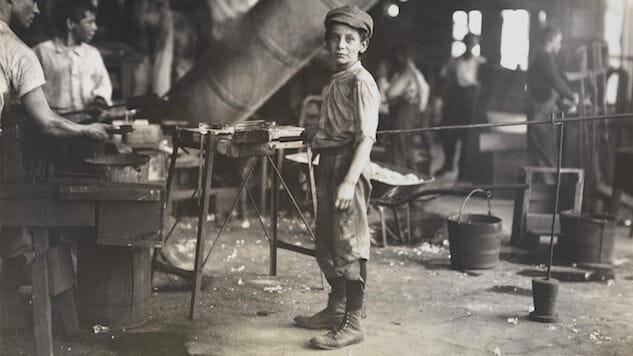American Experience‘s The Gilded Age Delivers an Origin Story for Our Own
Photo: Courtesy of the Museum of the City of New York TV Reviews American Experience
I suspect every generation probably faces a temptation to believe they are the ones on the precipice, the ones at the tipping point, the ones facing things like nothing we’ve ever faced before.
So it’s good to be reminded of our history, because what we’re experiencing mostly has happened before.
The Gilded Age, directed by Sarah Colt, is exactly the kind of documentary that keeps PBS eternally relevant and for which we have always relied on it. It tracks the rise of the great industrial titans of 19th century New York and the development of the original American 1%. As one of the interviewed historians notes, it’s important to remember that “gilded” doesn’t mean “gold.” It’s a veneer, a thin golden coating on another material. She then mentions “the rot underneath,” and while that’s not inherently what the word connotes, there’s certainly plenty of rot to examine in our industrial past and its ramifications for the present.
We follow the trajectories of the storied barons of New York society—Andrew Carnegie’s steel fortune, JP Morgan’s rise to the top of the banking world, the Vanderbilts’ railroad fortune and their (at the time) controversial ascension into elite society. We see how the decadent splendor of a few families was built, often brutally, on the backs of the working class. Via a number of historians and a lot of very cool archival images, the program provides a kind of origin story for questions we’re still asking today. How should the economy work? What is its best relationship to government? Can we concern ourselves with economic growth and economic justice, or is it always one at the expense of the other? Are we indeed one nation in which everyone has the opportunity to thrive, or is there one United States for the extremely wealthy and one for the rest of us?
As New York City became the first American city with a million inhabitants, the economy was booming and jobs were abundant. But the wealth of the people at the top depended on cheap labor, and working-class folks (including children) were expected to work twelve-hour days for very low wages. Henry George inflamed the imaginations of American laborers with his best-selling Progress & Poverty, which condemned the growing economic inequality and put forth the premise that poverty was not due to personal failure but caused by a rigged system. He was nominated as a Labor candidate for mayor of New York. He was defeated, but it was a very close race.
The program also takes us to Kansas and the rise of social justice activist Mary Elizabeth Lease, who was instrumental in developing the Populist party, which in 1890 won a staggering 91 seats in the Kansas state legislature. The movement spread. Labor unions developed. There were strikes in defiance of wage cuts for steel workers and other laborers. Clashes between laborers and barons of industry created massive economic instability, stock market disasters, mass unemployment, starvation and violence. There was a march on Washington. The government sided with people like Carnegie, enabling him to thwart union efforts to obtain fairer wages.
Sound familiar?
The program takes us through the Presidential election of 1896, in which pro-labor candidate William Jennings Bryan proposed an alternative to the pervasive notion of “trickle-down” economics. His suggestion that legislating to make the masses prosperous would in fact trickle up. 80% of the eligible voters in the United States voted in that election. Bryan lost, by a slim margin, to William McKinley, who had the backing of people like Carnegie and Morgan.
“The question of wealth versus people ballooned in the Gilded Age,” concludes historian Nell Irvin Painter. “Do our governments represent wealth or do they represent people? This is a fundamental issue, which is with us today.”
Upshot: The Gilded Age is a solid, thorough, well-constructed documentary. They say those who fail to learn history are doomed to repeat it—and perhaps we are doomed to repeat history no matter how much we learn. (It certainly sometimes seems like it; this program will give you a strong and unsettling sense of déjà vu.) It’s important viewing for anyone who wants a deeper understanding of the economic realities we’re living with right now, and how we got here.
The Gilded Age premieres on American Experience tonight at 9 p.m. on PBS. Check your local listings.
Amy Glynn is a poet, essayist and fiction writer who really likes that you can multi-task by reviewing television and glasses of Cabernet simultaneously. She lives in the San Francisco Bay Area.